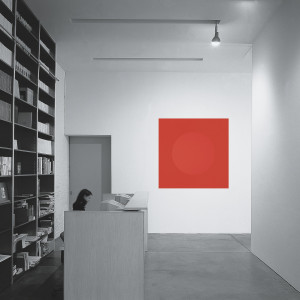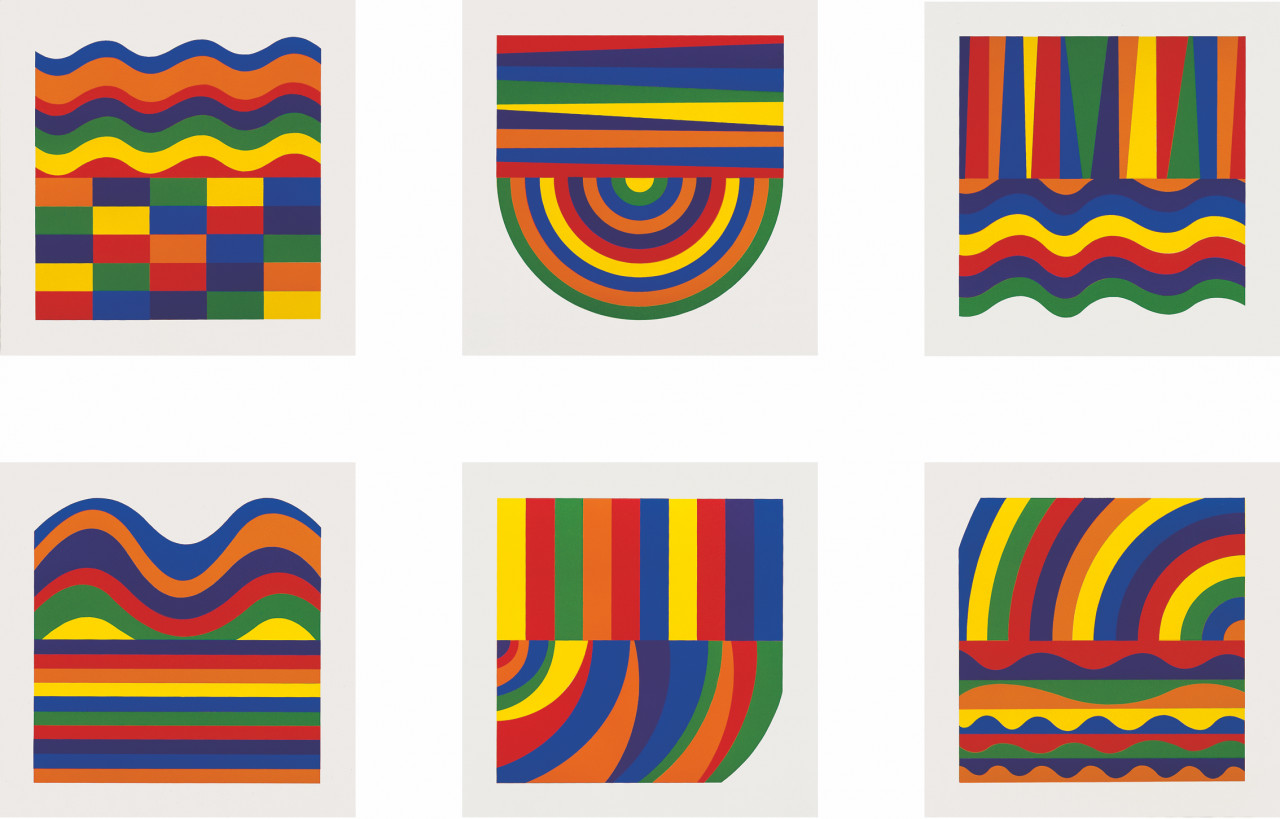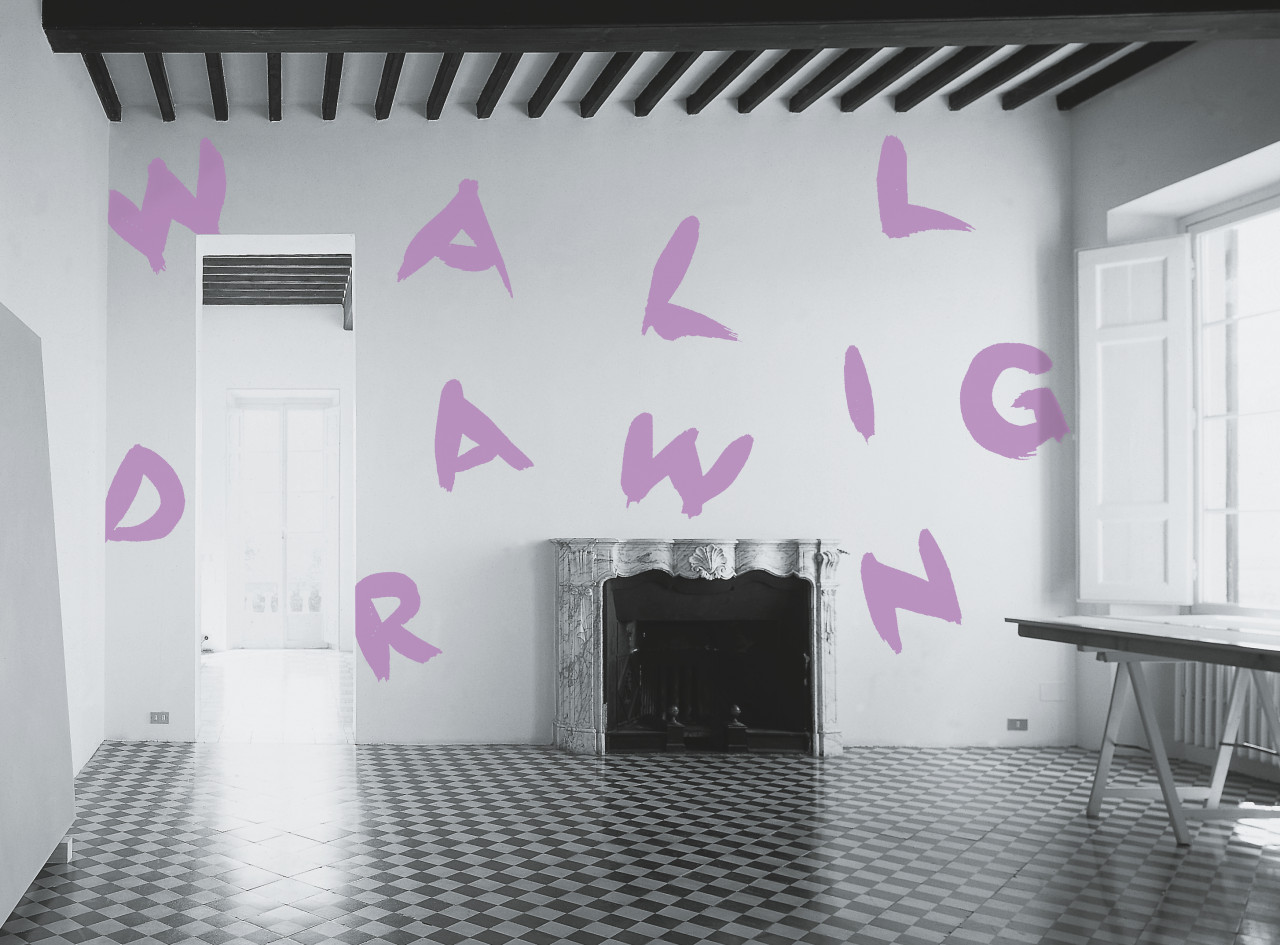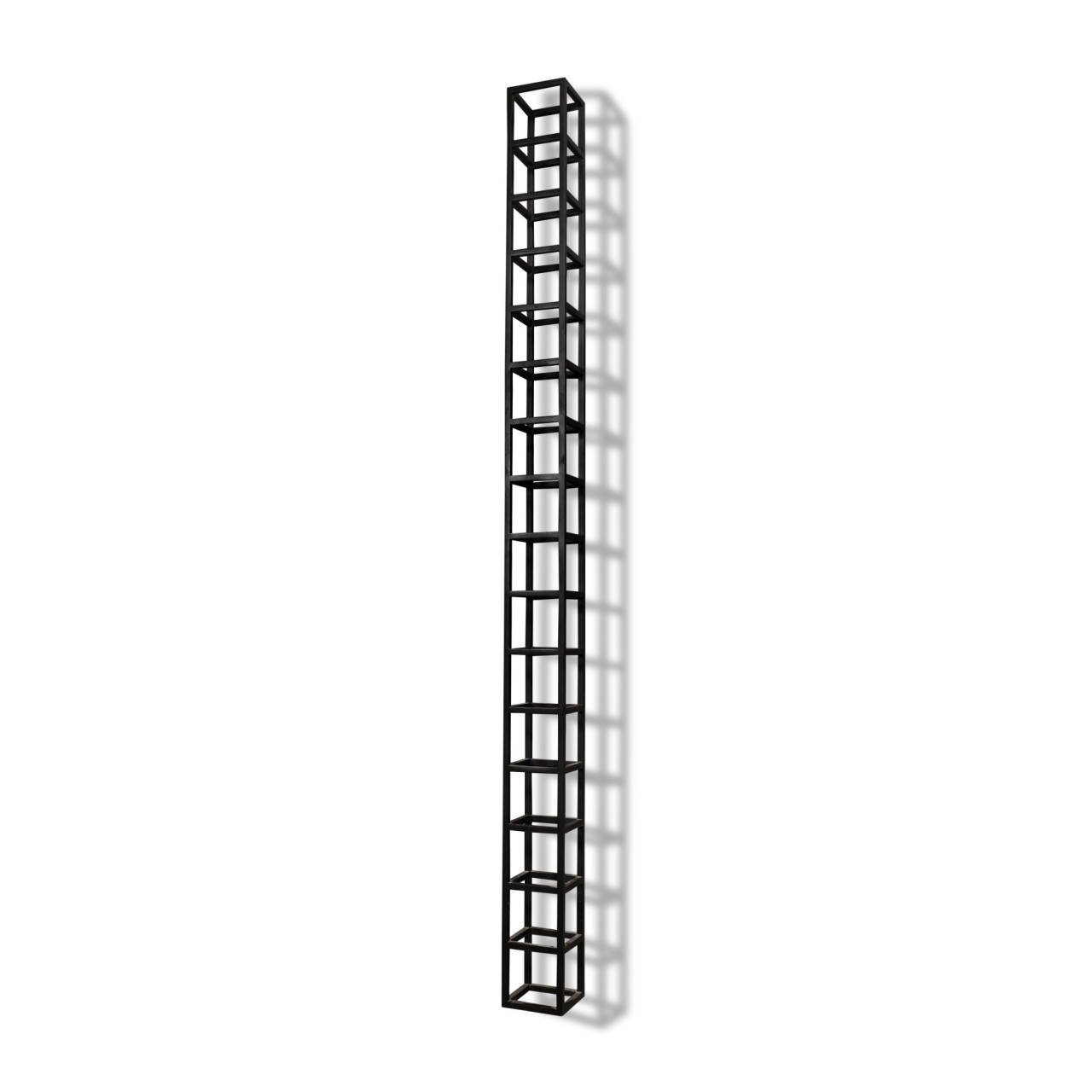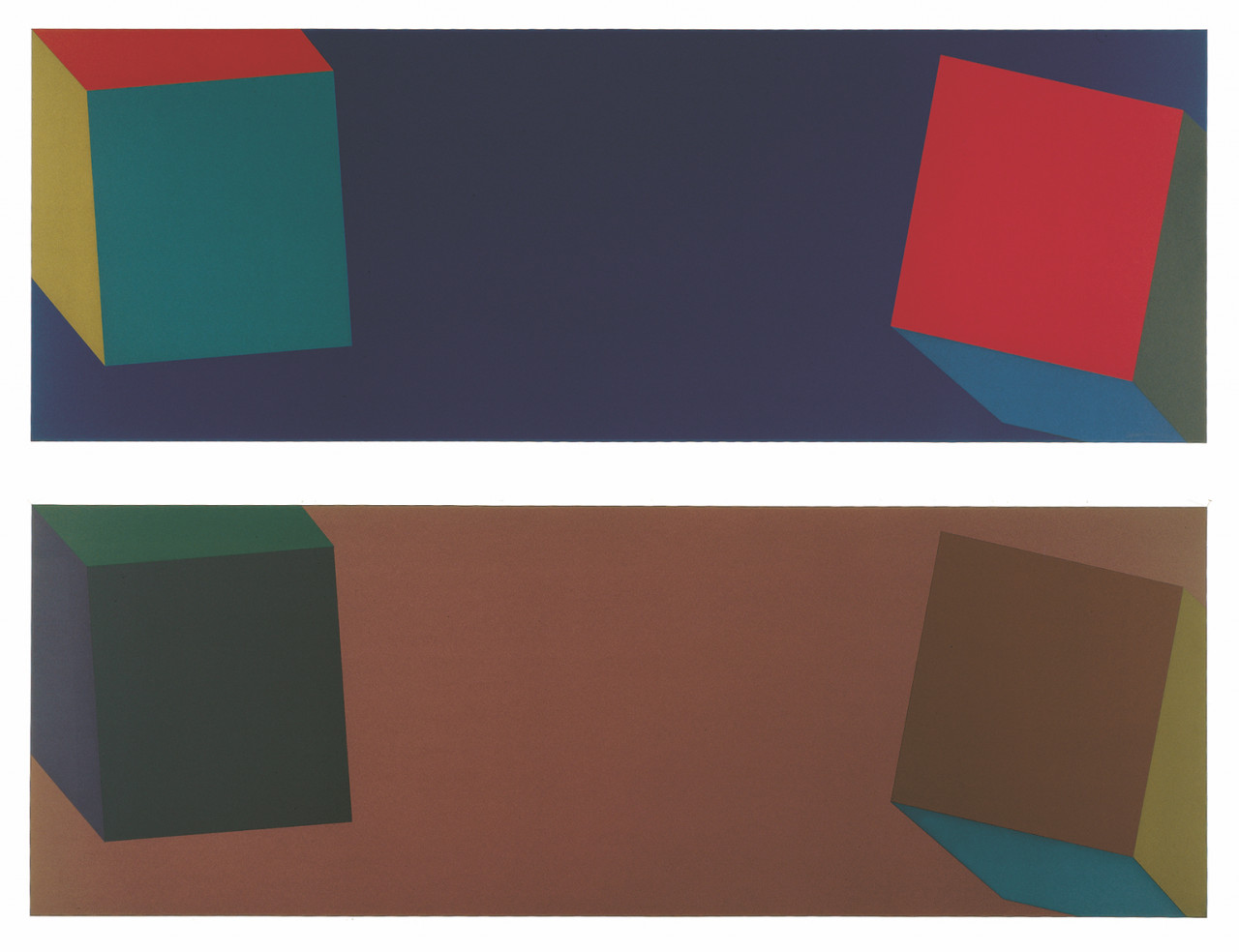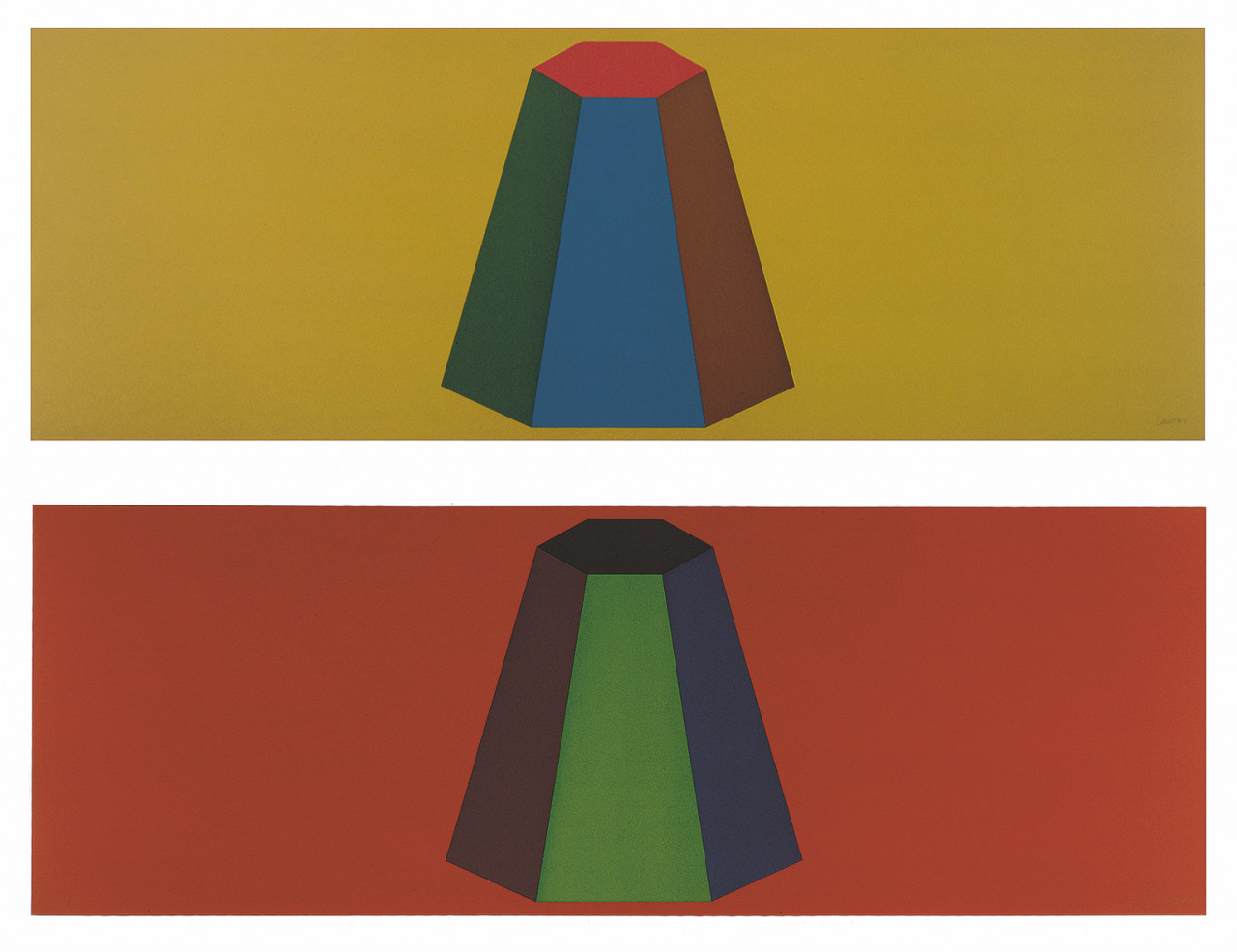Sol LeWitt
Sol LeWitt (1928-2007), born 1928 in Hartford, Connecticut, lived and worked in New York and near Spoleto, Italy. LeWitt is considered one of the most influential practitioners of conceptual artist, a form in which the essence of the work is the artist's idea rather than the craftsmanship of execution. LeWitt saw the artist in a role analogous to that of the architect, who designs a building but does not build it. He developed his artistic vocabulary from basic geometric structures and their transformation by using – as is typical for the minimalist tendencies of his generation – these fundamental elements as regular repeated modular units or as series which explore a range of possibilities in a logical, preset sequence. LeWitt was fascinated by the multiplicity of things, especially the multiplicity of things that can be generated by a simple idea.
Sol LeWitt Editions
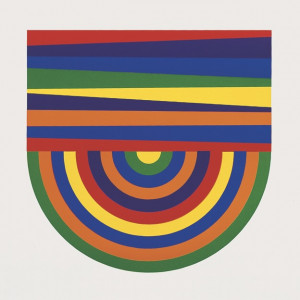
Arcs and Bands in Colors A - F
1999
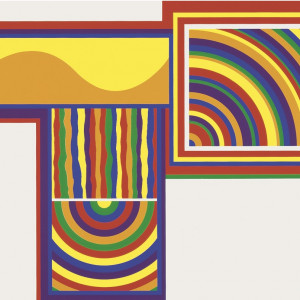
Arcs and Bands in Colors 1 and 2
1999
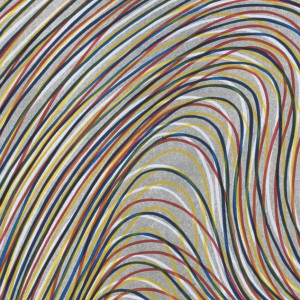
Wavy Lines on Gray
1996-1998

Wavy Lines with Black Border
1997
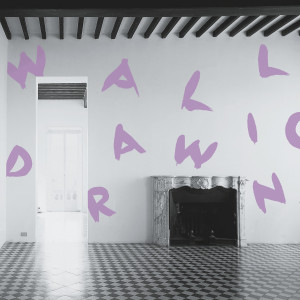
Wall Drawing
1992
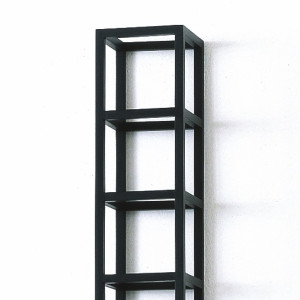
Wall Piece (16 modules high)
1988

Two Cubes with Colors Superimposed
1988
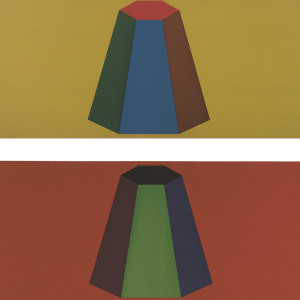
Flat Top Pyramid with Colors Superimposed
1988
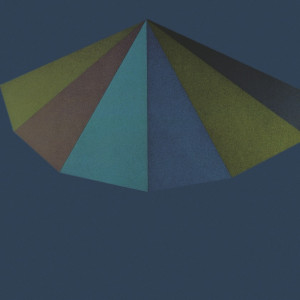
A Pyramid
1987
Unique Works
Arcs and Bands in Colors A - F
1999
Set of 6 linocuts on rag paper, each print 51 x 51 cm (20 x 20 in), each signed and numbered. Edition of 50.
Sol LeWitt’s edition Arcs and Bands in Colors A – F comprises six linocuts based on a systematic arrangement of organic and linear forms. The works share a unified color palette and generate dynamic, evolving structures through variations in geometric elements. Undulating movements, strict right angles, ascending and descending ramps, curves, and semicircles engage in a tension-filled interplay. Despite their formal diversity, the compositions convey a sense of progression, as if an evolutionary process unfolds across the series. The recurring forms and color modules create a visual system that reflects LeWitt’s characteristic fusion of conceptual rigor and structural variation.
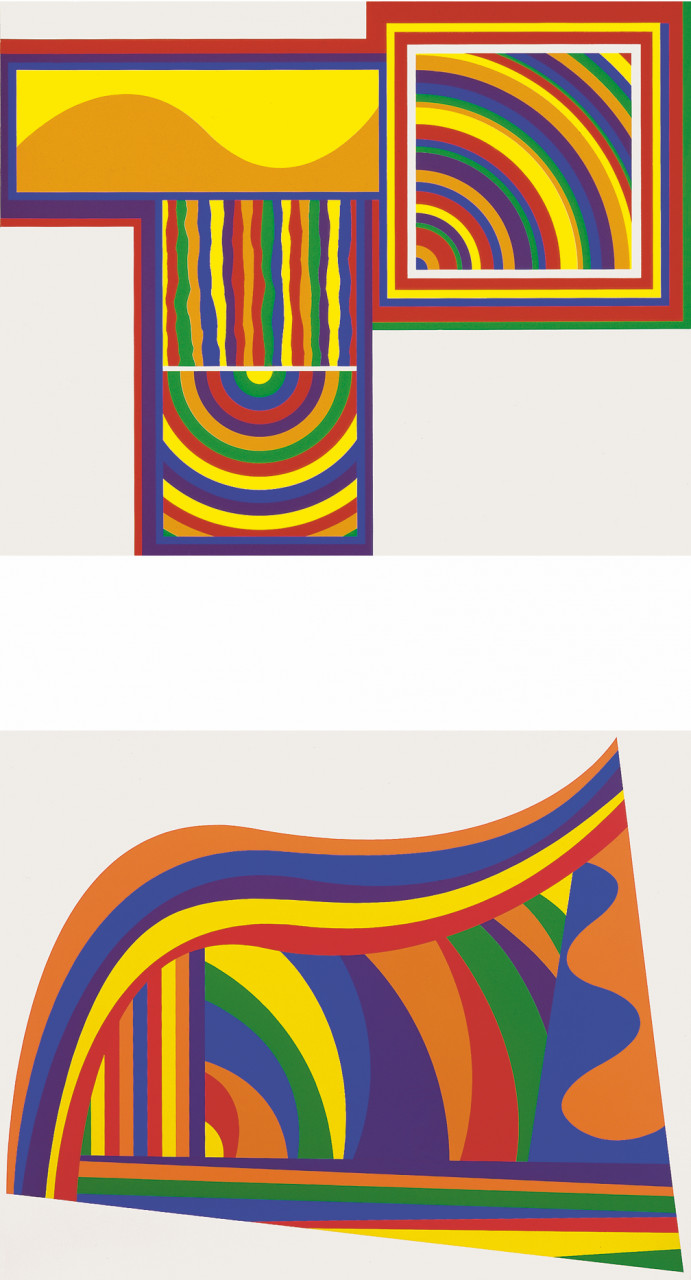
Arcs and Bands in Colors 1 and 2
1999
Silkscreens on rag paper, each 80 x 100 cm (31½ x 39¼ in), signed and numbered. Edition of 50 each.
The two-part edition Arcs and Bands in Colors 1 and 2 reflects Sol LeWitt’s conceptual engagement with modular structures. By combining organic and linear elements – arcs, bands, and basic geometric forms – a dynamic order emerges, characterized by recurring patterns. Tension-filled transitions between strict geometry and flowing movement, along with subtle variations in arrangement, enhance the serial rhythm typical of LeWitt’s work and guide the viewer’s gaze through the composition.
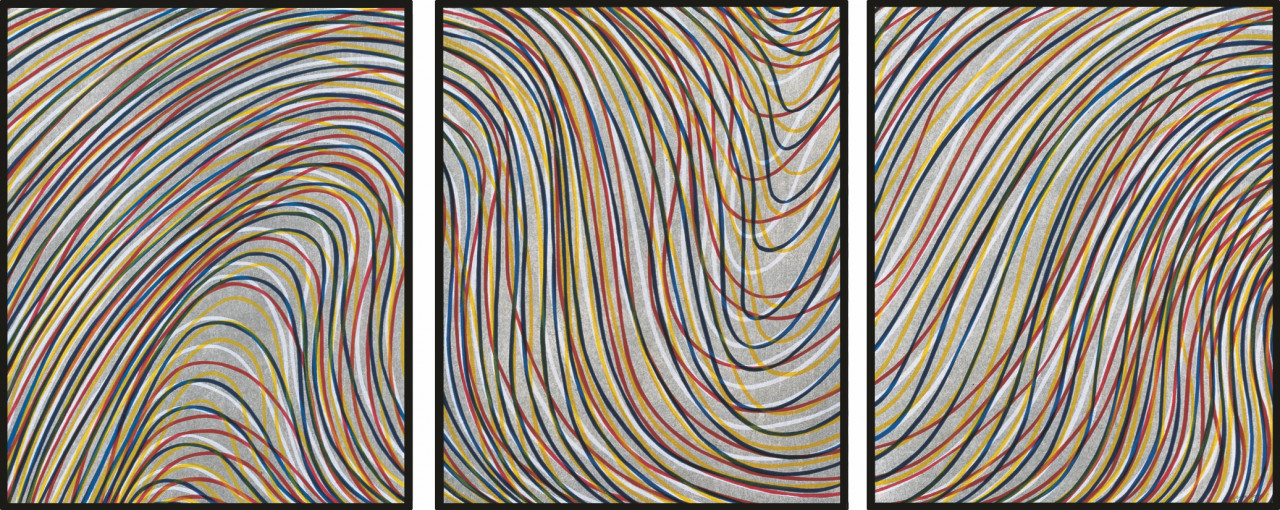
Wavy Lines on Gray
1996-1998
From Sequences
Triptych of three woodcuts, printed with oil paint on Awa Kozo paper, 50 x 40 cm (19¾ x 15¾ in). Edition: 60 + X, signed and numbered on print C.
This vibrant triptych edition by Sol LeWitt exemplifies his late-career exploration of wavy lines as a structured yet expressive visual language. Each panel is filled with flowing, multicolored lines – red, blue, yellow, and black – that twist and ripple across the surface, creating a dynamic sense of movement and rhythm. Despite the apparent spontaneity of the lines, their placement is governed by a system, reflecting LeWitt’s enduring commitment to conceptual processes. The triptych format enhances the compositional energy, as each section offers a distinct variation within a unified visual logic.
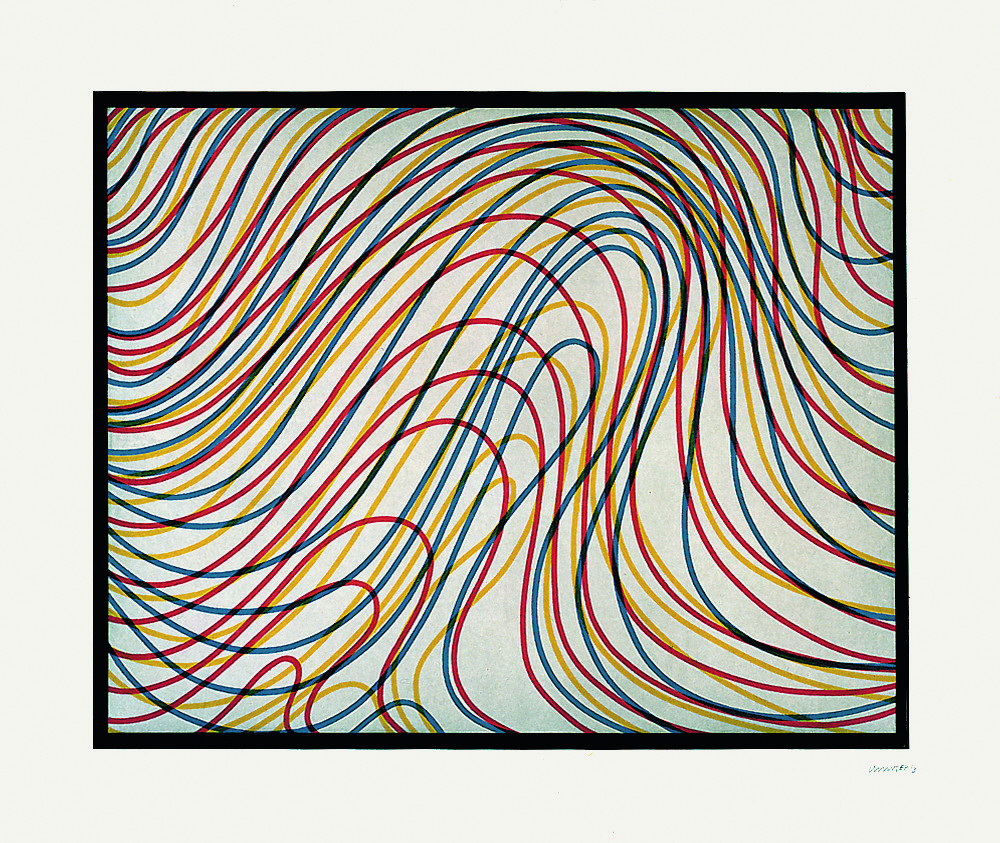
Wavy Lines with Black Border
1997
Aquatint on Awa Kozo paper, 53.3 x 63 cm (21 x 24¾ in). Edition of 60 + X, signed and numbered.
This edition is part of a series of works where Sol LeWitt used wavy lines as part of his broader exploration of the line as a fundamental visual and conceptual element. While LeWitt is best known for his grids, straight lines, and geometric systems, his wavy lines mark a significant shift toward organic form and gestural variation within a conceptual framework.
Wall Drawing
1992
From Wall Works
"wall drawing" to be written on a wall in the hand of the owner of this artwork, medium and size also to be chosen by the owner. Limited to 10 installations. Certificate: an 8 x 10 in black and white photograph of the installation, which was to be sent by the owner to the artist to have it signed, numbered and returned.
As one of the first truly contemporary artists, LeWitt did wall drawings beginning in 1968. Initially they were executed in pencil in his own hand, but soon they were replaced by written instructions and sketches meant to enable any competent draftsperson to execute a wall drawing. This concept confirmed LeWitt's notion of the artist as a thinker and originator of ideas rather than as a craftsperson. Due to the temporary nature of most LeWitt wall drawings the instructions given by the artist function somewhat as do musical scores, and the artist welcomes subsequent performances in other locations.
Wall Piece (16 modules high)
1988
Pinewood construction, painted black, 191 x 13 x 13 cm. Edition of 20, signed and numbered on verso.
In the work of Sol LeWitt, the influential American conceptual artist and co-founder of Minimal Art, simple geometric and stereometric forms are systematically arranged into series. For this edition, LeWitt employed the cube – a fundamental element of his visual vocabulary since the 1960s – in its open form ("open cube") to construct a human-scale column.
Two Cubes with Colors Superimposed
1988
Two silkscreens in 25 colors on Arches Cover rag paper, each 76 x 241 cm. Edition: 30, each signed and numbered.
This edition by Sol LeWitt is presented in an exceptionally long horizontal format, with two cubes positioned at its outer edges. The cubes, partially cropped and visually set apart from the background by color, appear to float within the pictorial space. The wide, empty expanse between them creates a field of tension between presence and absence, evoking a sense of lightness or even weightlessness. Sol LeWitt rigorously continues his conceptual reduction here, exploring the relationship between form, space, and perception.
Flat Top Pyramid with Colors Superimposed
1988
Two silkscreens in 20 and 23 colors on Arches Cover rag paper, 76 x 241 cm. Edition: 30 (+ 5 A.P. + 2 P.P. + 3 H.C.), signed and numbered.
In this edition, Sol LeWitt structures an unusually elongated horizontal format with a centrally positioned hexagonal mastaba – a flattened pyramid that stands out distinctly from the background through its reduced use of color. The expansive empty spaces on either side of the geometric form enhance the sense of volume and depth, creating an almost meditative spatial experience. In a determined continuation of his conceptual practice, LeWitt explores the interplay between form and space, surface and illusion. The radical reduction of means reveals a quiet complexity in which perception becomes an active, meaning-generating force.
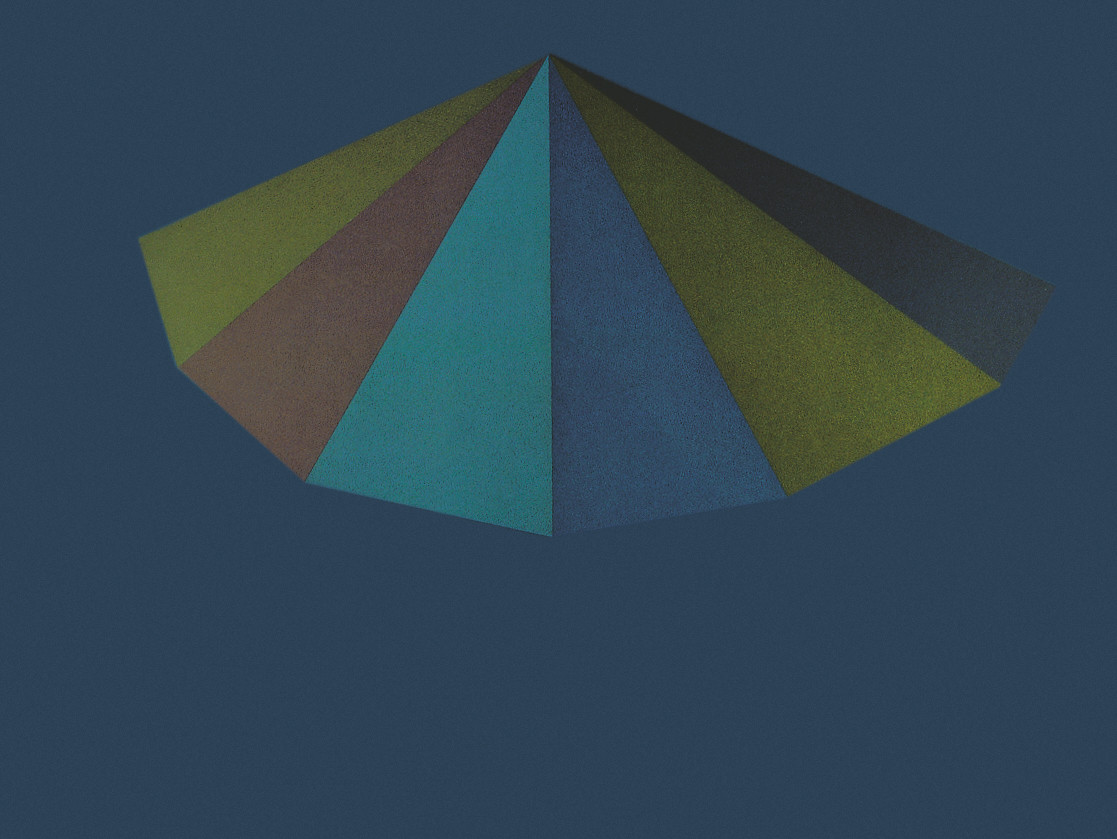
A Pyramid
1987
From For Joseph Beuys
Silkscreen on rag paper, 61 x 81.3 cm (24 x 32 in). Edition of 90 + XXX, signed and numbered.
This edition, which Sol LeWitt contributed to the group portfolio dedicated to Joseph Beuys, features a pyramid-like structure composed of several tapering triangles arranged in a semicircular formation. The strict geometry stands in stark contrast to the surrounding empty space, creating a sense of volume, depth, and an almost contemplative spatial presence.
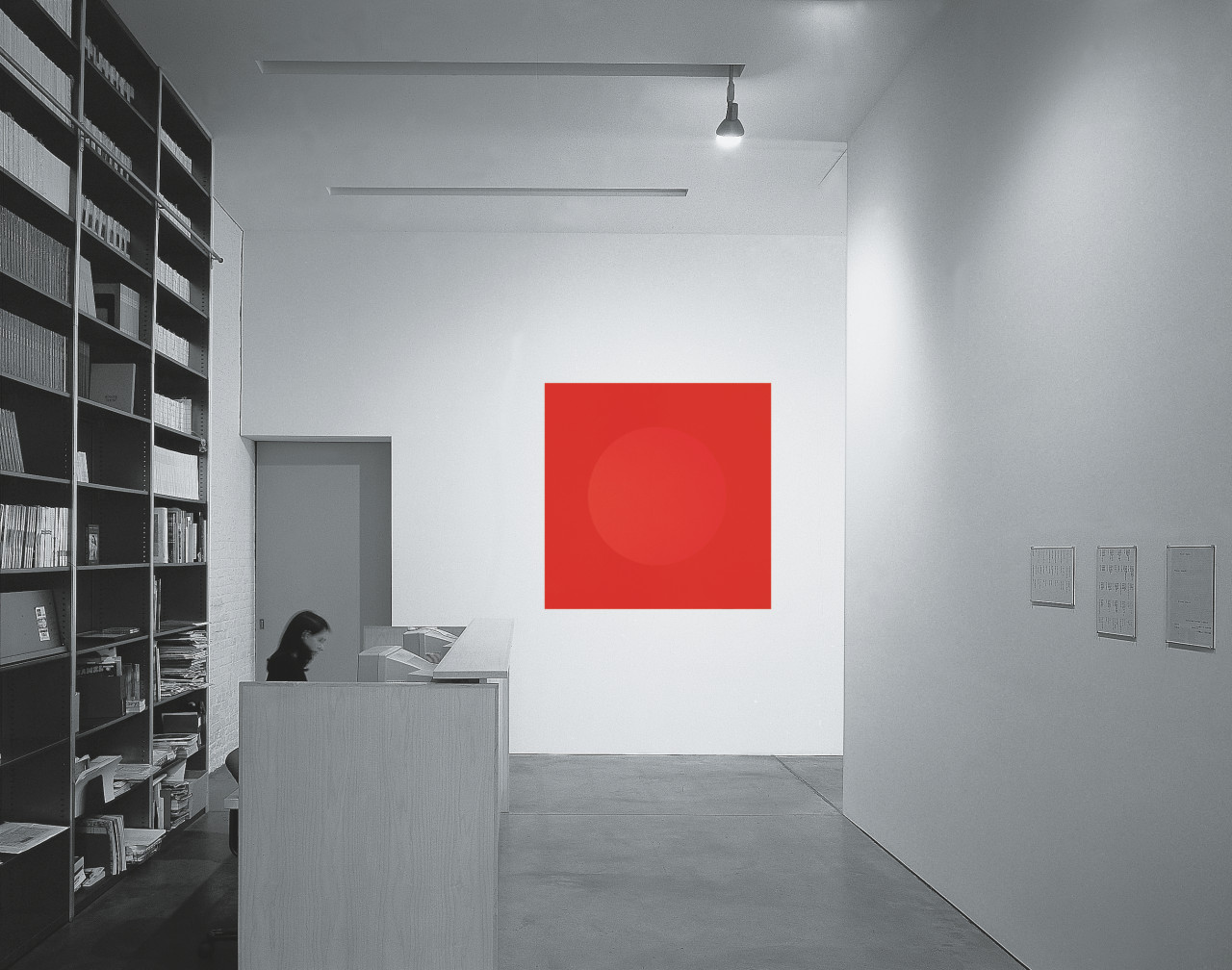
Wall Drawing #891
1998
From Wall Works
A matte red circle 91 cm (36 in) within a glossy red square 150 x 150 cm (60 x 60 in), painted directly on the wall. Limited to one installation (unique). Certificate: text on paper, signed, and a diagram of the works in pencil or ink, 20 x 25 cm (8 x 10 in).
This work by Sol LeWitt was created as part of the group project Wall Works and follows a radically minimalist aesthetic: a matte red circle is applied directly onto a glossy, identically colored square and installed on the wall. Despite the identical color, the two geometric forms subtly differentiate themselves, creating a delicate visual tension. This effect lends the composition an almost sculptural presence. Through the extreme reduction to elemental forms and colors, LeWitt succeeds in creating a work of striking depth and conceptual clarity.
